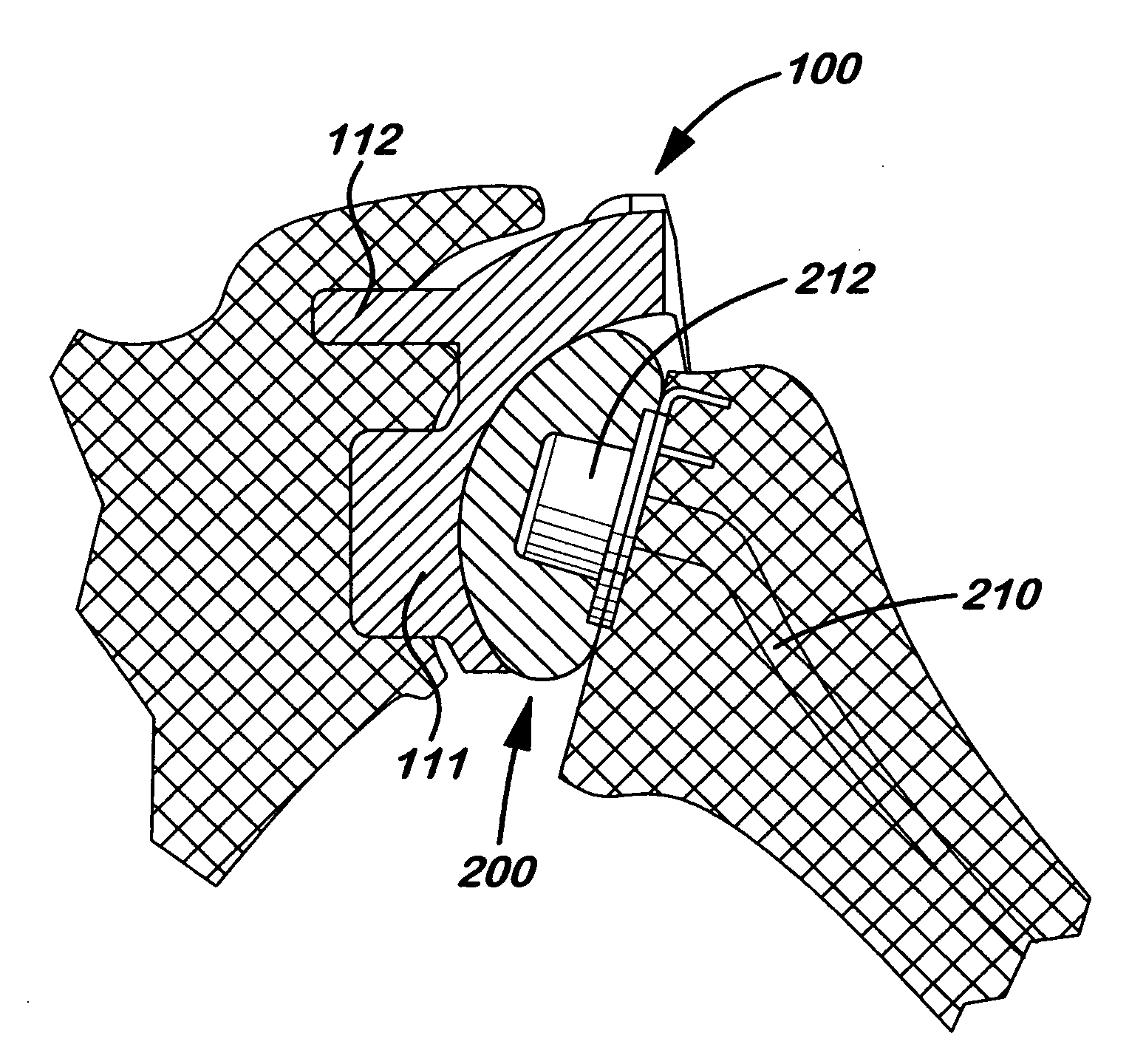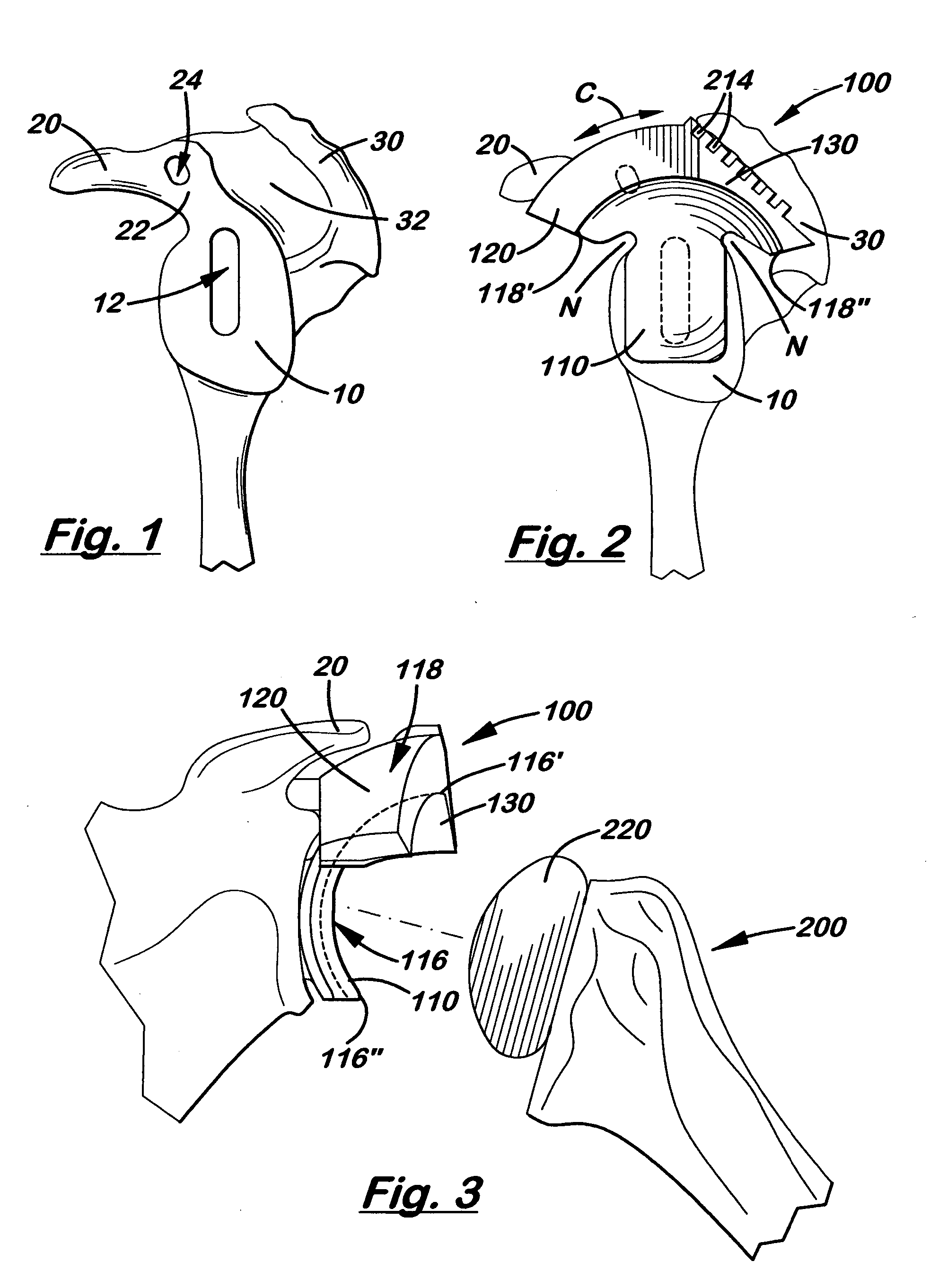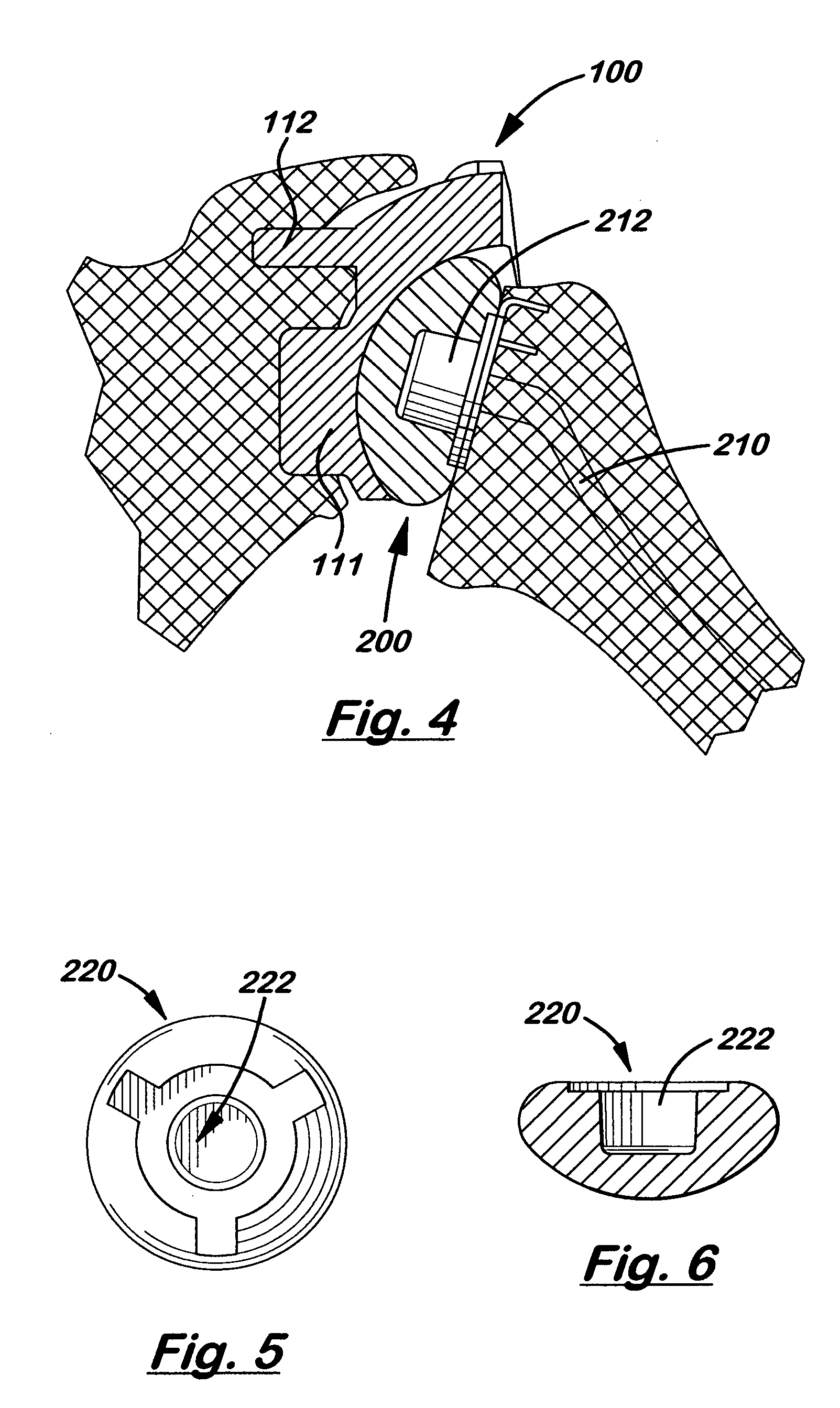Semiconstrained shoulder prosthetic for treatment of rotator cuff arthropathy
a technology for rotator cuff arthropathy and prosthetics, which is applied in the field of shoulder replacement devices for treating rotator cuff arthropathy, can solve the problems of humeral head erosion, humeral head erosion, and glenoid fossa erosion
- Summary
- Abstract
- Description
- Claims
- Application Information
AI Technical Summary
Benefits of technology
Problems solved by technology
Method used
Image
Examples
Embodiment Construction
[0041] Referring to the figures, there is shown one, but not the only, embodiment of the invented semiconstrained shoulder prosthetic. In this Description and the claims, the term “proximal” means toward the center / torso of the body, whereas the term “distal” indicates a point farthest from the center / torso of the body. Other directional terms of reference used herein are: “superior” meaning toward the head / top; “inferior” meaning away from the head or toward the bottom; “anterior” meaning toward the front; “posterior” meaning toward the back; “medial” meaning inwardly from the side toward the midline of the body; and, “lateral” meaning outwardly from the midline of the body toward the side.
[0042] The preferred embodiment of the invented semiconstrained shoulder prosthetic comprises a glenoid component 100 and a humeral component 200 for replacement of a patient's deteriorated gleno-humeral joint. Preferably, the glenoid component 100 shaped to offer the patient a greater range of ...
PUM
 Login to View More
Login to View More Abstract
Description
Claims
Application Information
 Login to View More
Login to View More - R&D
- Intellectual Property
- Life Sciences
- Materials
- Tech Scout
- Unparalleled Data Quality
- Higher Quality Content
- 60% Fewer Hallucinations
Browse by: Latest US Patents, China's latest patents, Technical Efficacy Thesaurus, Application Domain, Technology Topic, Popular Technical Reports.
© 2025 PatSnap. All rights reserved.Legal|Privacy policy|Modern Slavery Act Transparency Statement|Sitemap|About US| Contact US: help@patsnap.com



